


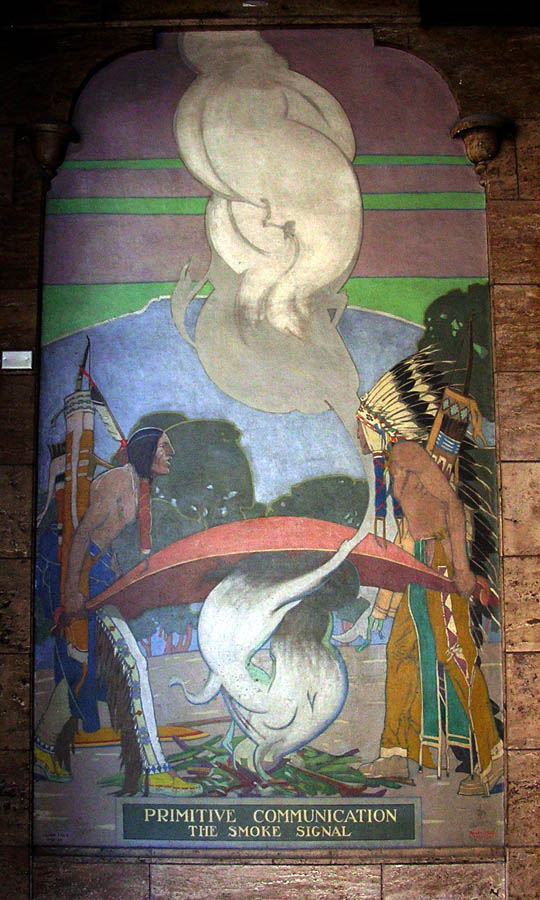
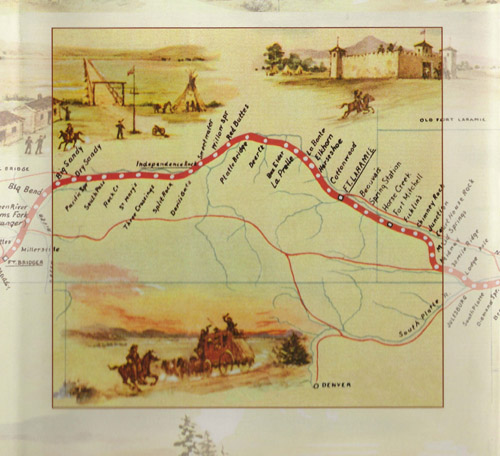
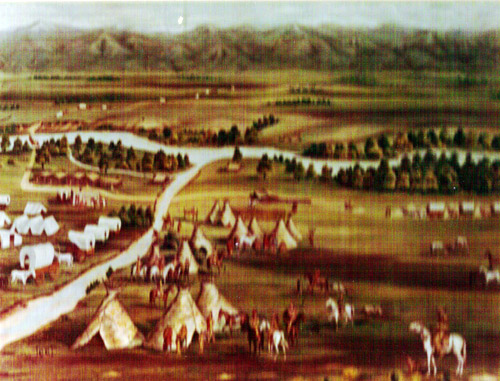
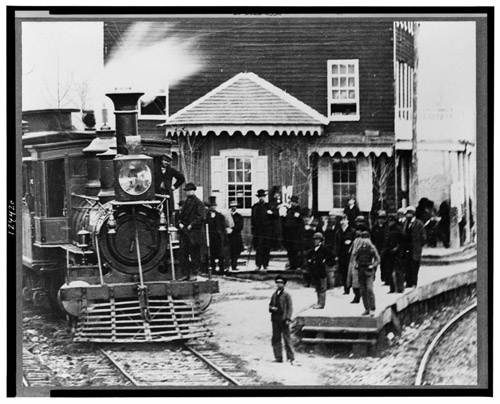


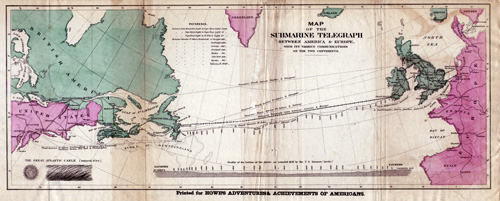

If we were here 170 years ago, we might see American Indians creatively using smoke signals to help their thoughts fly to others. Settlers sent their thoughts in letters carried slowly by horseback or stagecoach.
Denver in mid-1800s (credit: Denver Public Library)
Imagine leaving your friends and family to live so far away you'd never hear their voices again.
"I think I should like to whisper in mother's ear many things which I cannot write. If I could only see her in her room for one-half hour..."
-Diaries and journals of Narcissa Whitman, 1836
en route from Philadelphia to Walla Walla, Washington
Whose voice do you want to hear when you're lonely?
This is first in a series of questions. See answers at the end of the exhibit.
In 1858 a cable laid on the Atlantic Ocean floor sent telegraph messages as far as Europe.
1870s decoded and delivered telegram.
Try sending a telegraph message
Look at the dots and dashes that represent letters of the alphabet. Each letter has a code different from any other letter in the alphabet.
To send the letter "A," you would press the lever once very quickly, pause, then press the lever and hold a second longer.
A quick tap of the telegraph lever sends a dot. Pressing the lever down for a second transmits a dash. Each letter must be spelled out to send a message. Pause for a couple of seconds before pressing the lever to transmit the second letter. This helps the person receiving your message translate it correctly.
To send an SOS distress message, press the lever for a second to send a dash, tap it for a dot, then press it twice more for the S, pause then tap the lever twice for two dots and press it once for a dash to send and O. Finally repeat the method you used for the S, and you've sent an SOS.
How would you send a message to your friend spelling out "Colorado?"
Imagine living in Denver 170 years ago.
Our thoughts couldn't fly far or fast before we had telecommunications. We shared most thoughts with people living close to us. Then people started to move across the country.
In 1843 Samuel Morse invented the telegraph--the first way telecommunications helped people's thoughts fly farther and faster.
Telegraph arrives in Denver
The telegraph came to Denver in 1863. The Rocky Mountain News, a long-time Denver newspaper, received news reports by telegraph. By 1870 railroads dispatched trains by telegraph.
What was different from now?
10-word message
Denver-New York
|
1863
telegraph
|
2011
smart phone text
|
|
Cost
|
$9*
|
About 2 cents
|
|
Potential customers
|
5,000
|
2.9 million
|
|
Delivery time
|
1-3 days
|
instant
|
|
Transmission speed
|
150 bits per second
|
14 trillion bits per second
|
* In today's dollars, the $9 cost would be $155 because the worth of the dollar has changed.
How much would your monthly bill be if you paid $155 per text message?










